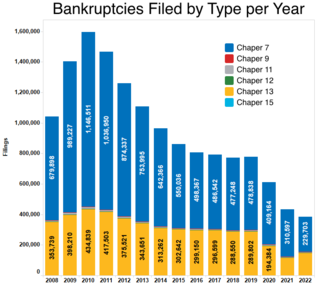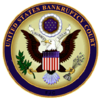
Talc, or talcum, is a clay mineral composed of hydrated magnesium silicate, with the chemical formula Mg3Si4O10(OH)2. Talc in powdered form, often combined with corn starch, is used as baby powder. This mineral is used as a thickening agent and lubricant. It is an ingredient in ceramics, paints, and roofing material. It is a main ingredient in many cosmetics. It occurs as foliated to fibrous masses, and in an exceptionally rare crystal form. It has a perfect basal cleavage and an uneven flat fracture, and it is foliated with a two-dimensional platy form.

Johnson & Johnson (J&J) is an American multinational, pharmaceutical, and medical technologies corporation headquartered in New Brunswick, New Jersey, and publicly traded on the New York Stock Exchange. Its common stock is a component of the Dow Jones Industrial Average, and the company is ranked No. 40 on the 2023 Fortune 500 list of the largest United States corporations. Johnson & Johnson has a global workforce of approximately 130,000 employees who are led by the company’s current chairman and chief executive officer, Joaquin Duato.

In the United States, bankruptcy is largely governed by federal law, commonly referred to as the "Bankruptcy Code" ("Code"). The United States Constitution authorizes Congress to enact "uniform Laws on the subject of Bankruptcies throughout the United States". Congress has exercised this authority several times since 1801, including through adoption of the Bankruptcy Reform Act of 1978, as amended, codified in Title 11 of the United States Code and the Bankruptcy Abuse Prevention and Consumer Protection Act of 2005 (BAPCPA).
A fraudulent conveyance or fraudulent transfer is the transfer of property to another party to prevent, hinder, or delay the collection of a debt owed by or incumbent on the party making the transfer, sometimes by rendering the transferring party insolvent. It is generally treated as a civil cause of action that arises in debtor/creditor relations, typically brought by creditors or by bankruptcy trustees against insolvent debtors, but in some jurisdictions there is potential for criminal prosecution.
A civil conspiracy is a form of conspiracy involving an agreement between two or more parties to deprive a third party of legal rights or deceive a third party to obtain an illegal objective. A form of collusion, a conspiracy may also refer to a group of people who make an agreement to form a partnership in which each member becomes the agent or partner of every other member and engage in planning or agreeing to commit some act. It is not necessary that the conspirators be involved in all stages of planning or be aware of all details. Any voluntary agreement and some overt act by one conspirator in furtherance of the plan are the main elements necessary to prove a conspiracy.

IMERYS S.A. is a French multinational company which specialises in the production and processing of industrial minerals. The main headquarter is located in Paris and is a constituent of the CAC Mid 60 index.

Tort reform consists of changes in the civil justice system in common law countries that aim to reduce the ability of plaintiffs to bring tort litigation or to reduce damages they can receive. Such changes are generally justified under the grounds that litigation is an inefficient means to compensate plaintiffs; that tort law permits frivolous or otherwise undesirable litigation to crowd the court system; or that the fear of litigation can serve to curtail innovation, raise the cost of consumer goods or insurance premiums for suppliers of services, and increase legal costs for businesses. Tort reform has primarily been prominent in common law jurisdictions, where criticism of judge-made rules regarding tort actions manifests in calls for statutory reform by the legislature.
Motley Rice LLC is an American plaintiffs' litigation firm headquartered in Mount Pleasant, South Carolina.

William Mark Lanier is an American trial lawyer and founder and CEO of the Lanier Law Firm. He has led a number of high profile product litigation suits resulting in billions of dollars in damages, including Johnson & Johnson baby powder and Merck & Co.'s Vioxx drug.

In re Garlock Sealing Technologies, LLC is a court case heard in the United States District Court for the Western District of North Carolina which involves the entry into bankruptcy proceedings by Garlock Sealing Technologies, once a manufacturer of coated asbestos gaskets, as a result of potential liability from current and future settlements. The plaintiffs were over 4,000 asbestos victims suffering from mesothelioma, including many Navy veterans, as well as an unknown number of future mesothelioma victims. As noted by the court, mesothelioma "is always fatal, causing death essentially by suffocation within about eighteen months of diagnosis" and involves "a horrific death."

Johnson's Baby is an American brand of baby cosmetics and skin care products owned by Kenvue. The brand was introduced in 1893 with Johnson's Baby Powder. The product line consists of baby powder, shampoos, body lotions, massage oil, shower gels and baby wipes.

The Furthering Asbestos Claim Transparency (FACT) Act of 2015 is a bill introduced in the U.S. House of Representatives by Congressman Blake Farenthold that would require asbestos trusts in the United States to file quarterly reports about the payouts they make and personal information on the victims who receive them in a publicly accessible database. The legislation would also allow defendant corporations in asbestos cases to demand information from the trusts for any reason.
Weitz & Luxenberg P.C. is a large personal injury and medical malpractice law firm headquartered in New York, specializing in asbestos litigation. The firm also specializes in medical malpractice, consumer protection, and environmental protection litigation.
Levy Konigsberg is an American-based law firm that was established in 1985. The company is known for a number of high-profile cases in the United States. Its practice areas include asbestos litigation, qui tam, lead poisoning, sexual abuse, tobacco litigation, medical malpractice, and negligence. In 2015, Levy Konigsberg was recognized as one of the 50 Law Firms in the 2015 Elite Trial Lawyers list by The National Law Journal.
Simon Greenstone Panatier is a law firm based in Dallas, Texas, specializing in personal injury litigation and tort liability.
Within the United States, the use of asbestos is limited by state and federal regulations and legislation. Improper use of asbestos and injury from exposure is addressed through administrative action, litigation, and criminal prosecution. Injury claims arising from asbestos exposure may be tried as mass torts.
Reid Collins & Tsai LLP is a national trial law firm with offices in New York, Austin, Dallas, Wilmington, and Washington, D.C. The firm represents plaintiffs in complex commercial litigation on a mixed-fee or contingency-fee basis.
Asbestos bankruptcy trusts are trusts established by firms that have filed for reorganization under Chapter 11 of the United States Bankruptcy Code to pay personal injury claims caused by exposure to asbestos. At least 56 such trusts were established from the mid-1970s to 2011.
Nachawati Law Group is an American plaintiffs' law firm headquartered in Dallas. The law firm was founded in 2006 by Bryan Fears and Majed Nachawati. The firm rebranded in October 2022 following the departure of Bryan Fears, who formed Fears Law. The firm is active in mass tort and multidistrict litigation on behalf of individuals and public entities.
Kenvue Inc. is an American consumer health company. Formerly the Consumer Healthcare division of Johnson & Johnson, Kenvue is the proprietor of well-known brands such as Aveeno, Band-Aid, Benadryl, Zyrtec, Johnson's, Listerine, Mylanta, Neutrogena, Tylenol, and Visine.









